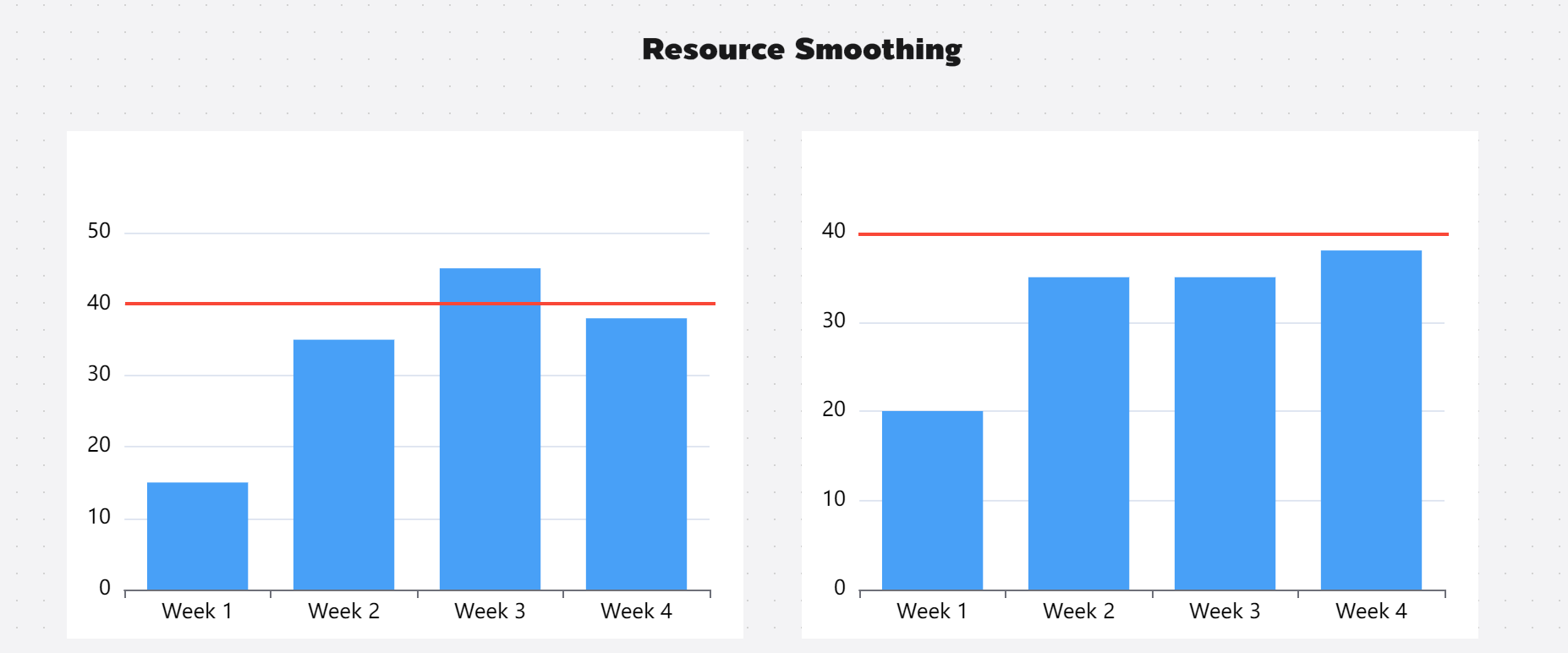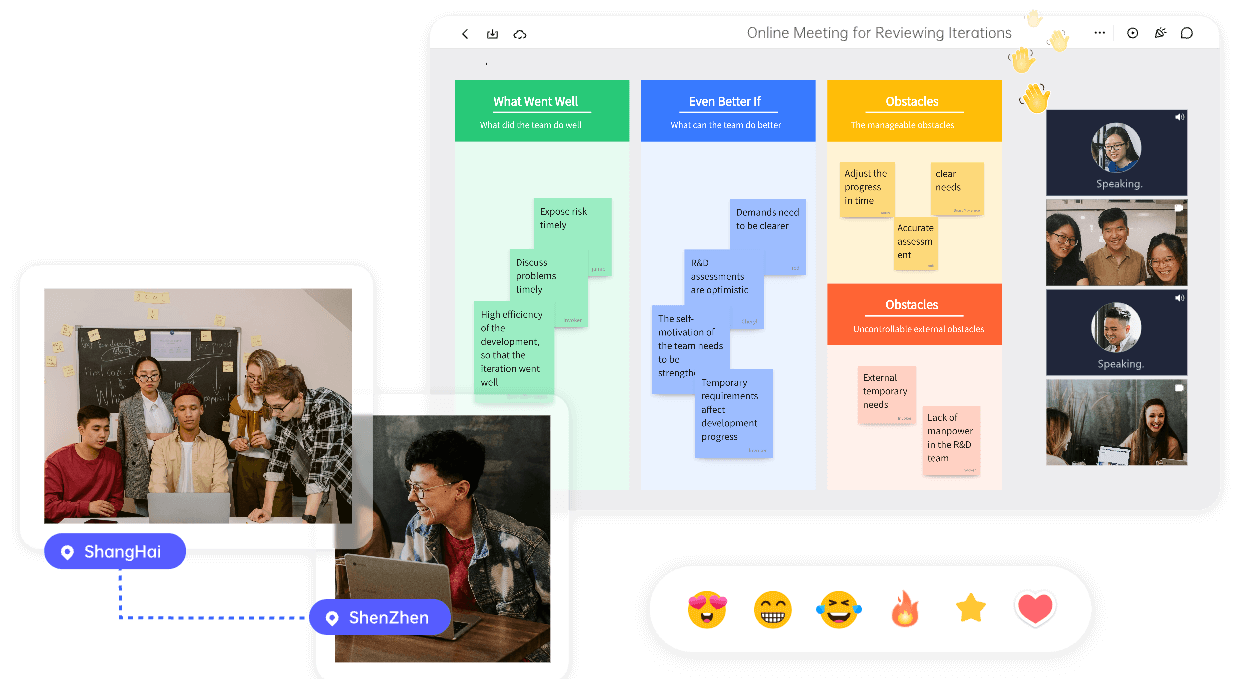In the intricate and multifaceted realm of project management, resource smoothing emerges as a pivotal technique that guarantees the most efficient utilization of resources. This comprehensive guide will dive deep into the nuances of resource smoothing, exploring its definition, potential disadvantages, and practical examples from various industries. Additionally, we'll shed light on effective strategies for successful implementation and draw comparisons with other related techniques such as resource loading and leveling to provide a holistic understanding of this vital aspect of project management.
Part 1. What Is Resource Smoothing in Project Management?
Resource smoothing, a key scheduling technique in project management, is designed to harmonize the demand for resources with their available supply. This method involves meticulously adjusting the project schedule with an aim to minimize any drastic fluctuations in resource usage. The goal here is not just to ensure efficient use of resources but also to maintain a steady workflow that aligns with the project deadlines. By doing so, resource smoothing helps in creating a balance between resource allocation and time management, thereby contributing significantly towards successful project completion.
Part 2. What Are the Advantages of Performing Resource Smoothing?
Resource smoothing levelling comes with several advantages that can significantly enhance the efficiency of project management.
- Optimal Resource Utilization: It ensures that resources are used efficiently, avoiding periods of overuse or underutilization.
- Reduced Overallocation: By balancing resource demand with supply, it helps prevent overallocation which can lead to burnout and decreased productivity.
- Improved Workflow Consistency: Resource smoothing promotes a more consistent workflow by minimizing fluctuations in resource usage.
- Enhanced Project Planning: It allows for better project planning as it provides a clear view of resource allocation and availability throughout the project timeline.
- Increased Flexibility: With resource smoothing, schedules can be adjusted to accommodate changes in resource availability or unexpected tasks, providing greater flexibility in project execution.
- Cost Efficiency: By ensuring resources are not idle or overused, resource smoothing can contribute to cost savings in the long run.
- Better Risk Management: It aids in identifying potential risks related to resource allocation and scheduling, allowing for proactive risk management strategies.
Part 3. What Are the Disadvantages of Performing Resource Smoothing
While resource smoothing certainly offers numerous benefits, it's important to acknowledge that it also comes with its own set of challenges. One potential drawback is the possibility of extended project durations. This can occur as a result of the necessary schedule adjustments made to ensure optimal resource usage, which may inadvertently push back the project timeline. Another challenge lies in the implementation of changes, particularly when resources unexpectedly become unavailable or new tasks emerge without prior notice. In such scenarios, adjusting the resource smoothing plan can be complex and time-consuming, potentially disrupting the workflow and causing delays in project completion. Therefore, while resource smoothing is an effective technique for managing resources, it requires careful planning and flexibility to navigate its potential pitfalls effectively.
Part 4. Examples of Resource Smoothing
Resource smoothing is a versatile technique that finds application in a wide array of industries. In the construction sector, for instance, it plays a crucial role in balancing labor and equipment usage over the course of the project timeline. This ensures that resources are neither left idle nor overused, thereby promoting efficiency and cost-effectiveness. Similarly, in the realm of software development, resource smoothing proves invaluable in managing workloads. By rescheduling tasks as needed, it helps ensure that developers are not overwhelmed with excessive work at any given moment. This not only aids in maintaining high productivity levels but also contributes to better quality control as developers can focus more effectively on their assigned tasks without feeling overburdened. Thus, from physical industries like construction to knowledge-based sectors like software development, resource smoothing serves as an essential tool for optimal resource management across diverse fields.
Part 5. Strategies for Resource Smoothing
Implementing successful resource smoothing requires a strategic approach that encompasses several key elements. First and foremost, careful planning and scheduling of tasks form the backbone of this technique. This involves prioritizing tasks based on their importance and the resources they require, thereby ensuring that high-priority tasks are adequately resourced and scheduled for completion in a timely manner.
Secondly, regular monitoring of resource usage is crucial to identify any potential issues of overuse or underutilization early on, allowing for prompt corrective action. Flexibility also plays a vital role in resource smoothing; being able to adjust schedules as needed allows for better accommodation of unexpected changes in resource availability or task requirements.
Lastly, leveraging appropriate project management tools can significantly enhance the efficiency of resource smoothing efforts. These tools can provide valuable insights into resource allocation and usage patterns, facilitate easy schedule adjustments, and offer visual aids for better understanding and communication of the project plan. Thus, through a combination of meticulous planning, continuous monitoring, flexibility, and effective tool utilization, resource smoothing can be successfully implemented to optimize project management processes.
Part 6. What Is the Difference Between Resource Loading and Smoothing?
Both resource smoothing and resource loading are pivotal techniques in project management, with the shared objective of optimizing resource utilization. However, their approaches to achieving this goal differ significantly. Resource loading is a technique that focuses on assigning resources to tasks without taking into account their availability. This can sometimes lead to potential over-allocation, where resources are stretched thin across multiple tasks, potentially leading to burnout or decreased productivity. On the other hand, resource levelling takes a more balanced approach. It aims at avoiding over-allocation by redistributing work based on the availability of resources. This means that tasks are scheduled and rescheduled according to when resources can be most effectively utilized, thereby ensuring a more even distribution of work and preventing any single resource from being overwhelmed. Thus, while both techniques strive for efficient use of resources, they employ different strategies - one focusing on task assignment regardless of resource availability, and the other prioritizing balance and redistribution based on available resources.
Part 7. How Boardmix Helps with Resource Smoothing
Boardmix stands out as an innovative online whiteboard tool, specifically designed with a suite of features that bolster effective resource smoothing. Its intuitive interface, coupled with an extensive range of versatile templates, provides users with a user-friendly platform to plan, monitor, and adjust project schedules visually. This visual approach not only simplifies the process but also enhances understanding and collaboration among team members. Furthermore, Boardmix's capabilities extend beyond mere planning - its dynamic features allow for real-time adjustments to schedules, thereby facilitating smoother execution of projects. Whether it's allocating resources efficiently or adjusting timelines to accommodate changes, Boardmix serves as a comprehensive solution for all your project management needs.
Conclusion
Gaining a deep understanding and effectively implementing resource smoothing can significantly elevate your project management process. It ensures optimal use of resources, minimizes disruptions due to over or under-utilization, and promotes a balanced workflow. With advanced tools like Boardmix at your disposal, which offers intuitive features for planning, monitoring, and adjusting schedules, mastering the technique of resource smoothing becomes not just an aspiration but an achievable reality in enhancing project efficiency and success.













